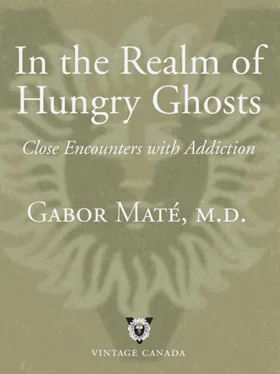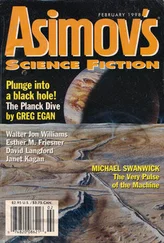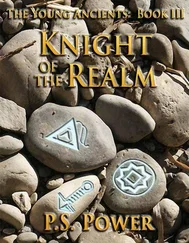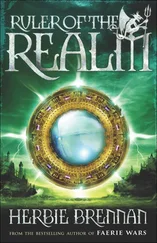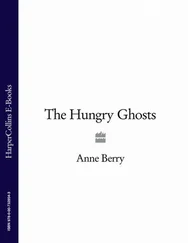Cocaine and other stimulant-type drugs work because they greatly increase the amount of dopamine available to cells in essential brain centres. That sudden rise in the levels of dopamine, one of the brain’s “feel-good” chemicals, accounts for the elation and sense of infinite potential experienced by the stimulant user, at least at the beginning of the drug habit.
As mentioned, it was already known that the brains of chronic cocaine users had fewer than normal dopamine receptors. The fewer such receptors, the more the brain would “welcome” external substances that could help increase its available dopamine supply. This recent primate study showed for the first time that the monkeys who developed a higher rate of cocaine self-administration—the ones who became more hardcore users—had a lower number of these receptors to begin with, before ever having been exposed to the chemical. This illuminating finding suggests that among rhesus monkeys, who are considered to be excellent models of human addiction, some are much more prone to extremes of drug dependence than others.
Stimulant drugs like cocaine and methamphetamine (crystal meth) exert their effect by making more dopamine available to cells that are activated by this brain chemical. Because dopamine is important for motivation, incentive and energy, a diminished number of receptors will reduce the addict’s stamina and his incentive and drive for normal activities when not using the drug. It’s a vicious cycle: more cocaine use leads to more loss of dopamine receptors. The fewer receptors, the more the addict needs to supply his brain with an artificial chemical to make up for the lack.
Why does chronic self-administration of cocaine reduce the density of dopamine receptors? It’s a simple matter of brain economics. The brain is accustomed to a certain level of dopamine activity. If it is flooded with artificially high dopamine levels, it seeks to restore the equilibrium by reducing the number of receptors where the dopamine can act. This mechanism helps to explain the phenomenon of tolerance, by which the user has to inject, ingest or inhale higher and higher doses of a substance to get the same effect as before. If deprived of the drug, the user goes into withdrawal partly because the diminished number of receptors can no longer generate the required normal dopamine activity: hence the irritability, depressed mood, alienation and extreme fatigue of the stimulant addict without his drug: this is the physical dependence state discussed in Chapter 11. It can take months or longer for the receptor numbers in the brain to rise back to pre–drug use figures.

On the cellular level addiction is all about neurotransmitters and their receptors. In different ways, all commonly abused drugs temporarily enhance the brain’s dopamine functioning. Alcohol, marijuana, the opiates heroin and morphine, and stimulants such as nicotine, caffeine, cocaine and crystal meth all have this effect. Cocaine, for example, blocks the reuptake, or re-entry, of dopamine into the nerve cells from which it is originally released.
Like all neurotransmitters, dopamine does its work in the space between cells, known as the synaptic space, or cleft. A synapse is where the branches of two nerve cells converge without touching, and it’s in the space between them that messages are chemically transmitted from one cell to the next. That is why the brain needs chemical messengers, or neurotransmitters, to function. Released from a neuron, or nerve cell, a neurotransmitter such as dopamine “floats” across the synaptic space and attaches to receptors on a second neuron. Having carried its message to the target nerve cell, the molecule then falls back into the synaptic cleft, and from there it is taken back up into the originating neuron for later reuse; hence, the term reuptake. The greater the reuptake, the less neurotransmitter remains active between the neurons.
Cocaine’s action may be likened to that of the antidepressant fluoxetine (Prozac). Prozac belongs to a family of drugs that increase the levels of the mood-regulating neurotransmitter serotonin between nerve cells by blocking its reuptake. They’re called selective serotonin reuptake inhibitors, or SSRIs. Cocaine, one might say, is a dopamine reuptake inhibitor. It occupies the receptor on the cell surface normally used by the brain chemical that would transport dopamine back into its source neuron. In effect, cocaine is a temporary squatter in someone else’s home. The more of these sites occupied by cocaine, the more dopamine remains in the synaptic space and the greater the euphoria reported by the user. 8
Unlike Prozac, cocaine is not selective: it also inhibits the reuptake of other messenger molecules, including serotonin. By contrast, nicotine directly triggers dopamine release from cells into the synaptic space. Crystal meth both releases dopamine, like nicotine, and blocks its reuptake, like cocaine. The power of crystal meth to rapidly multiply dopamine levels is responsible for its intense euphoric appeal.
These stimulants directly increase dopamine levels, but the action of some chemicals on dopamine is indirect. Alcohol, for example, reduces the inhibition of dopamine-releasing cells. Narcotics like morphine act on natural opiate receptors on cell surfaces to trigger dopamine discharge. 9
Activities such as eating or sexual contact also promote the presence of dopamine in the synaptic space. Dr. Richard Rawson, Associate Director of UCLA’s Integrated Substance Abuse Program, reports that food seeking can increase brain dopamine levels in some key brain centres by 50 per cent. Sexual arousal will do so by a factor of 100 per cent, as will nicotine and alcohol. But none of these can compete with cocaine, which more than triples dopamine levels. Yet cocaine is a miser compared with crystal meth, or “speed,” whose dopamine-enhancing effect is an astounding 1200 per cent. 10It’s easy to see why the crystal meth–addicted woman Carol spoke of the drug’s effect as an “orgasm without sex.” After repeated crystal meth use the number of dopamine receptors in crucial brain circuits will be reduced, just as with cocaine.
In short, drug use temporarily changes the brain’s internal environment: the “high” is produced by means of a rapid chemical shift. There are also long-term consequences: chronic drug use remodels the brain’s chemical structure, its anatomy and its physiological functioning. It even alters the way the genes act in the nuclei of brain cells. “Among the most insidious consequences to drugs of abuse is the vulnerability to craving and relapse after many weeks or years of abstinence,” says a review of addiction neurobiology in a psychiatric journal. “The enduring nature of this behavioural vulnerability implies long-lasting changes in brain function.” 11
Since the brain determines the way we act, these biological changes lead to altered behaviours. It is in this sense that medical language refers to addiction as a chronic disease, and it is in this sense of a drug-affected brain state that I think the disease model is useful. It may not fully define addiction, but it does help us understand some of its most important features.

In any disease, say smoking-induced lung or heart disease, organs and tissues are damaged and function in pathological ways. When the brain is diseased, the functions that become pathological are the person’s emotional life, thought processes and behaviour. And this creates addiction’s central dilemma: if recovery is to occur, the brain, the impaired organ of decision making, needs to initiate its own healing process. An altered and dysfunctional brain must decide that it wants to overcome its own dysfunction: to revert to normal—or, perhaps, become normal for the very first time. The worse the addiction is, the greater the brain abnormality and the greater the biological obstacles to opting for health.
Читать дальше
